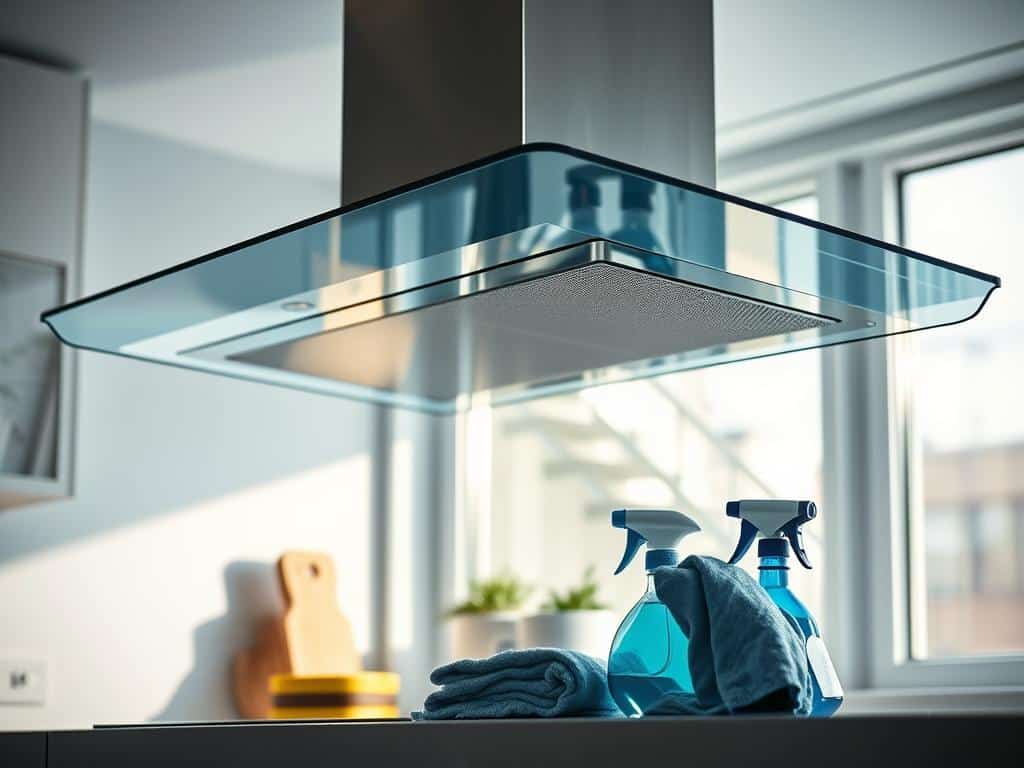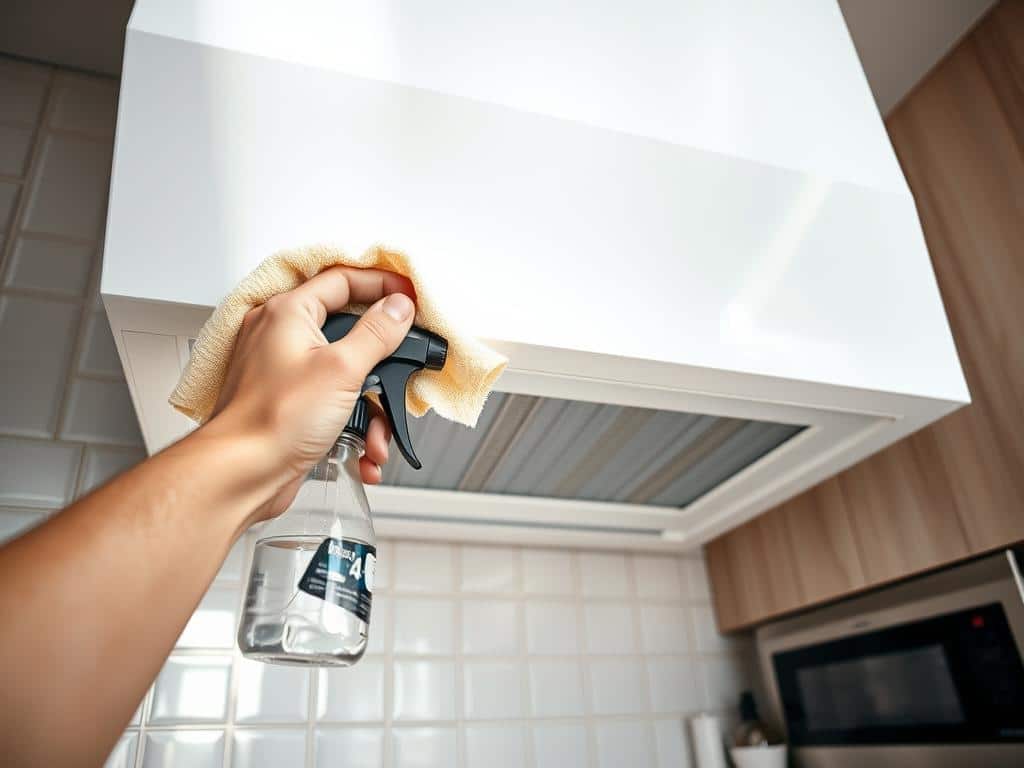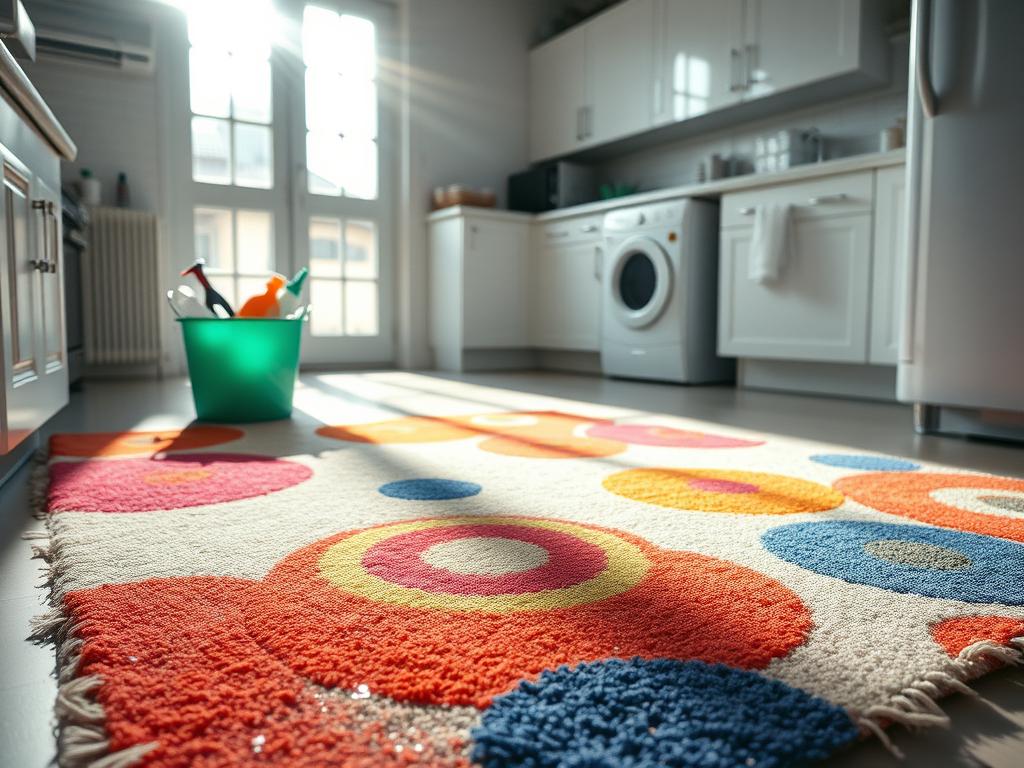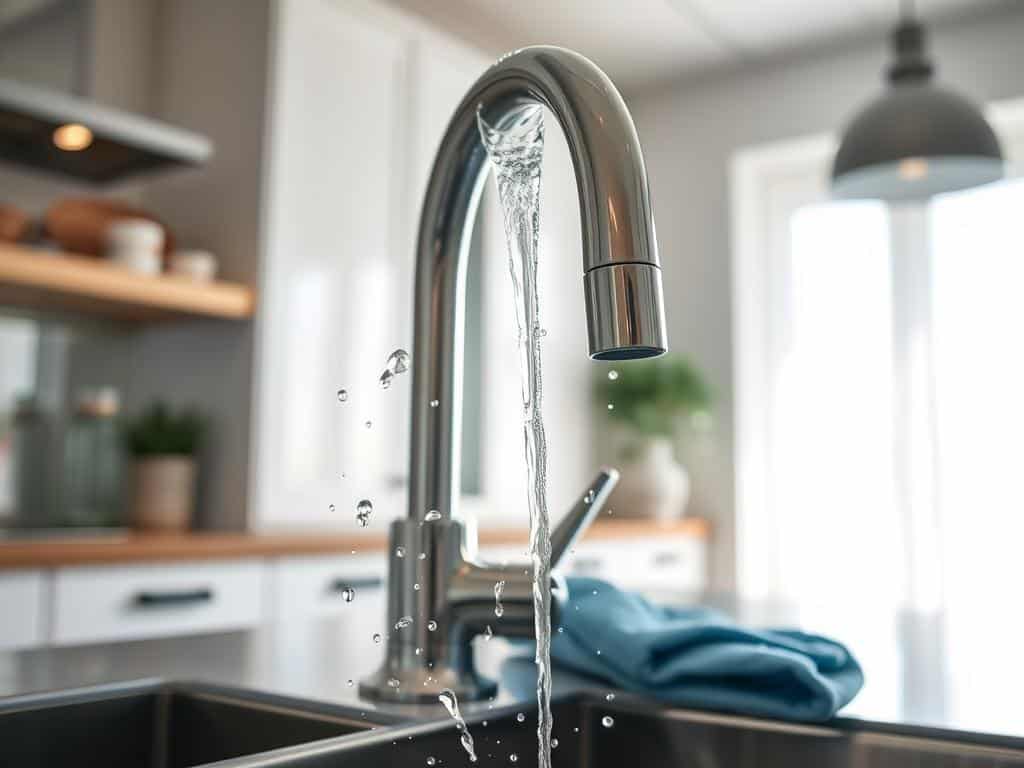
It’s crucial to keep your kitchen exhaust hood in pristine condition, as it is the front line in battling greasy residues and grimy splatters from everyday cooking. Establishing a regular cleaning schedule not only enhances the hygiene and safety of your kitchen but also ensures that your exhaust system operates efficiently. Renowned experts like Ron Shimek, president of Mr. Appliance, recommend a consistent cleaning routine, focusing on internal parts such as fan blades and filters to maintain optimal performance.
By using common household items like baking soda and adhering to a recommended cleaning frequency—monthly for regular cooks or quarterly for those who cook less—you can significantly improve temperature control and overall kitchen comfort. Effective kitchen exhaust hood cleaning tips are essential for grease removal and to maintain kitchen hygiene, ensuring your cooking environment remains safe and pleasant.
The Importance of Cleaning Your Kitchen Exhaust Hood
Beyond the aesthetic concerns, the importance of cleaning your kitchen exhaust hood is rooted in kitchen safety and operational efficiency. Accumulated grease and debris can severely compromise the hood’s performance, resulting in reduced efficiency in ventilation. This not only strains the hood’s motor but also impairs indoor air quality, posing a significant threat to kitchen safety. Neglecting exhaust hood cleaning can result in costly repairs, downtime, and energy inefficiency. Regular range hood maintenance ensures that your kitchen continues to extract excess heat and moisture effectively, contributing to a comfortable cooking environment.
Clogged or dirty exhaust hoods impede airflow, which can affect the work environment, causing discomfort to the kitchen staff and decreasing overall air quality. Failure to maintain the exhaust hood properly can lead to fines, closure, or legal action, particularly in commercial kitchens. Compliance with health and safety regulations is paramount. Cleaning not only helps in kitchen safety but also prevents contamination of HVAC systems and minimizes the risk of fire hazards. WoolGuard Hood Filters, for example, are noted for their capacity to capture 98% of grease, mitigating fire risks while improving ventilation.
Moreover, regular range hood maintenance is an investment rather than an expense. Clean and well-maintained exhaust systems significantly reduce maintenance costs by up to 30% and extend the lifespan of the equipment. Utilizing the right filters can lower the need for frequent cleanings by up to 75%, making it a cost-effective approach. To illustrate, hiring professionals for exhaust hood cleaning is a common practice among businesses because it ensures thorough cleaning and adherence to safety standards.
Improved ventilation through regular exhaust hood cleaning also results in better air quality, which can, in turn, reduce illness-related employee absenteeism. Ensuring that your exhaust hood operates optimally is integral to maintaining both a safe and efficient kitchen space. By investing in consistent maintenance, you create a safer cooking environment and secure the long-term performance of your kitchen equipment.
Gathering Your Cleaning Materials
When setting out to clean your kitchen exhaust hood, gathering the right materials is your first step to efficiency. Essential supplies include a powerful cleaning solution or a DIY mixture of hot water and degreasing dish soap, which effectively cuts through greasy residue. Eco-friendly degreasers, which are formulated from natural ingredients, not only tackle stubborn stains but also contribute to a fresh-smelling kitchen post-cleanup. Additionally, tools such as a soft-bristled cleaning brush, microfiber cloths, and baking soda for tackling tough stains are indispensable for this task.
Essential Supplies
- Cleaning supplies for exhaust hood such as degreasing solutions are crucial to ensure thorough cleanliness and hygiene.
- Degreasing solutions derived from sustainable cleaning practices are essential for an eco-friendly approach.
- Microfiber cloths for a streak-free finish.
- A soft-bristled cleaning brush to tackle embedded grease and dirt.
- Baking soda for addressing stubborn stains.
Step-by-Step Process for Cleaning Kitchen Exhaust Hood
Cleaning a kitchen exhaust hood is essential to maintaining a clean and safe kitchen environment. A thorough and regular cleaning routine not only helps in removing grease from hood surface but also in improving kitchen air quality. Here is a detailed guide to help you with the cleaning process:
Preparing the Hood
Before you begin the cleaning preparation, make sure to unplug the unit or turn off the circuit breaker that powers the vent. Carefully disassemble kitchen hood components, including the grease and charcoal filters. Access the fan blades and clean them with a degreaser and damp cloth. This initial step ensures safety and easy access to all parts that need cleaning.
Cleaning the Exterior
When tackling cleaning stainless steel hoods, use a mixture of warm water and dish soap applied with a microfiber cloth. Ensure you move with the grain of the stainless steel to avoid scuffs. For tougher stains, a mixture of vinegar and baking soda can be an effective alternative to commercial cleaning products. Consistent cleaning of the exterior is critical in dealing with grease and oil splatters.
Scrubbing the Underside
The hood’s underside is often heavily laden with grease and grime. Use a specialized non-scratch cleaning brush along with a degreasing agent to effectively clean this area. For obstinate stains, applying a paste made of warm water and baking soda and gently scrubbing it can help. Wipe off the residue with a damp cloth. Consistently cleaning the underside of hood maintains its effectiveness in removing grease from hood surface.
Cleaning the Filter
Range hood filter maintenance is crucial for efficient operation. Soak the filters in a mixture of hot water, dish soap, and baking soda to loosen any accumulated grease and debris. Use a scrub brush to clean off the loosened matter and rinse thoroughly. Allow the filters to dry completely before reassembling to prevent mold or bacteria growth. Regularly maintaining the filters plays a significant role in improving kitchen air quality.
Here’s a comparative overview of factors influencing the cost and time of professional cleaning:
| Factor | Impact on Cost | Impact on Time |
|---|---|---|
| Crew Size | Increases cost with larger crews | Decreases time with more workers |
| Location | Higher costs in urban areas | Variable, depending on distance |
| Hood System Size | Larger systems cost more | More time for larger systems |
| Water Availability | Impacts cost if special arrangements needed | May increase time if limited access |
| Hood Condition | Poor condition increases cost | Increases time for neglected systems |
Maintaining Your Kitchen Exhaust Hood
To prolong the life of your kitchen exhaust hood and ensure its optimal performance, it’s crucial to adhere to a consistent schedule for cleaning. Regular upkeep can prevent hood malfunctions and enhance the safety and efficiency of your kitchen environment.

For those who cook daily, a monthly cleaning regimen is recommended, while seasonal cleanings may suffice for less frequent chefs. Hauslane range hoods, for instance, come with dishwasher-safe filters, making the cleaning process more manageable. It’s advised to clean both the inside and outside of the hood, paying particular attention to grease and dust buildup. Utilizing a degreasing solution paired with baking soda can yield exceptional results for metal filters, ensuring they remain fully functional and efficient.
Preventing hood malfunctions involves more than just routine cleaning. Replacing charcoal filters bi-monthly or as soon as you notice a decrease in effectiveness is vital. Routine maintenance, such as cleaning the fan blades, is also essential. Dirty fan blades can cause excessive stress on the motor, potentiating burnout or overheating issues. Additionally, the appropriate use of range hood settings can significantly contribute to maintaining both the motor and overall performance of the hood.
The Federal Emergency Management Agency (FEMA) identifies cooking as the leading cause of injuries in residential fires and the fourth leading cause of all residential fires. This alarming statistic underlines the importance of consistent kitchen exhaust hood upkeep. In commercial settings, the potential risks are even more pronounced, where unattended cooking can escalate into severe structural damages. Thus, maintaining cleanliness and functionality of exhaust hoods is not only a matter of efficiency but also of safety.
Implementing these preventive measures can lower the chances of malfunctions and extend the life of your kitchen exhaust hood. Establishing a cleaning schedule tailored to your cooking habits and staying vigilant about routine checks can ensure your kitchen remains a safe and effective space for culinary activities.
Conclusion
Maintaining a clean kitchen exhaust hood is paramount for ensuring kitchen safety, improving air quality, and upholding overall cleanliness. Adopting a structured approach to cleaning, which encompasses thorough preparation and the cleaning of both exterior and interior parts, aids in the efficient operation of your range hood. Implementing kitchen cleanliness best practices, such as regular filter cleaning and addressing grease buildup, will contribute positively to your cooking environment.
According to the National Fire Protection Association (NFPA) 96 guidelines, the frequency of cleaning your kitchen exhaust hood should correspond to the volume and type of cooking performed. For instance, systems servicing high-volume operations might necessitate quarterly inspections and cleanings, while those in low-volume contexts, such as churches, could suffice with annual inspections. These best practices align not only with maintaining efficiency but also with adhering to safety standards, significantly reducing the risks of fire and health hazards.
Remember, the cleaning process should comprehensively remove combustible contaminants before surfaces accrue significant grease or oily sludge. Additionally, ensuring that all access panels and switches are restored post-cleaning is crucial, as is maintaining documentation of the cleaning service and inspection reports for compliance. By integrating these cleaning kitchen exhaust hood summary practices into your routine, you’ll help preserve the efficiency and safety of your kitchen, creating an optimal environment for all your culinary endeavors.



